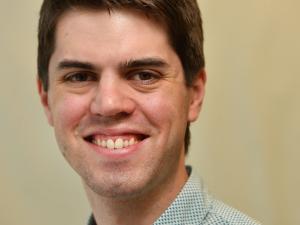Sensing and Spectroscopy
A defining feature of our technological society is a hunger for more accurate and precise measurement and sensing.
Important real-world applications such as: The Global Positioning System (GPS), magnetic imaging, radar, optical fibre communications and even mobile phones, all rely on developing ever more accurate and precise measurements.
The Precision Measurement Group works to build instruments to meet this technological demand. We develop and extend measurement platforms of high value to fundamental physics: with an increasing focus on industrial, medical and defence contexts.
The optical frequency comb is a Nobel Prize winning innovation in laser technology that is poised to revolutionise spectroscopy.
We use this massively parallel laser source to characterise atomic and molecular samples with unprecedented precision, accuracy, and speed. We also specialise in precision laser absorption and two-photon spectroscopy, both within conventional cells and fibre based architectures, with applications in fundamental physics, frequency standard development and quantum computing.
We are developing a program of high-precision sensing based on precision optical techniques using specialised lasers to probe crystalline-disc whispering gallery resonators, primarily for precision measurements of temperature, as well as all optical atomic magnetometers for precision magnetometry.
Example 1: Atom trap trace analysis
Noble gas radio-isotopes are naturally occurring substances that can be used to study and date processes in natural systems.
There are two key applications for noble gas radio-isotopes: the first is in dating, particularly in hydrology, where they allow dating in important age ranges outside those provided by traditional isotopes such as Carbon-14. Krypton-85 can measure ages in the scale of 1 year to decades, Argon-39 for 50 to 1000 years, while Krypton-81 can be used for ranges of 100 thousand to a million years.
Applications for these tracers include groundwater movement, deep ocean currents, and studying old groundwater systems such as the Great Artesian Basin. The second major application arises because Krypton-85 is primarily produced by nuclear fuel reprocessing plants, and thus can be used to determine compliance to nuclear non-proliferation treaties.
Measuring these noble-gas radio-isotopes is difficult due to their extremely low abundance, as low as 1 part in 1000 trillion for the targeted applications. We are currently constructing a measurement system that uses the recently developed atom-trap trace analysis technique to count the rare radio-isotope atoms in a gas or water sample, as part of a new facility that will be made available to Australian and international environmental researchers.
This project will involve developing the laser cooling and trapping system required for our atom-trap trace analysis system, as well as optimisation of the overall excitation and detection system. There is room for multiple students to be involved in different aspects of the overall system, and although we are building an experimental apparatus, there is also the possibility for theoretical projects based on modelling the system so as to obtain enhanced performance.
Example 2: Molecular spectroscopy for disease diagnosis
This project focusses on detecting biomarkers in the breath that can be used to diagnosis disease for which there are no other symptoms. We have built an innovative device to make these measurements. It consists of the Nobel Prize winning frequency comb (essentially millions of separate laser sources) together with a device that can split the light into its constituent laser colours and measure each power simultaneously. By comparing the spectrum before and after passing through the breath sample it is possible to garner quantitative knowledge on the concentration and nature of the chemicals.
This project will focus on developing the apparatus to take the data while we offer a separate project (see project F10) that focusses on the data analysis that will enable chemical identification and concentration estimation.
Example 3: Primary thermometry using Doppler-broadened spectroscopy
The kelvin, the SI unit of thermodynamic temperature, has recently been redefined by fixing the Boltzmann constant to an exact value. This change now allows absolute determination of temperature through careful measurement of the width of Doppler-broadened absorption lines.
Unlike many methods, this technique allows determination of temperature over a broad range.
This project will improve the temperature uncertainly that we currently achieve in order obtain accuracy competitive with other primary thermometry techniques. The project will also develop a roust high-temperature cell that will allow application of the technique in difficult environments such as furnaces, where accurate temperature measurement is currently not possible.
Supervisors
- Professor Andre Luiten | Dr Chris Perrella | Dr Ben Sparkes - contact Professor Luiten to arrange a tour and meet with potential supervisors
- Research area: Institute for Photonics and Advanced Sensing
- Recommended honours enrolment: Honours in Physics



